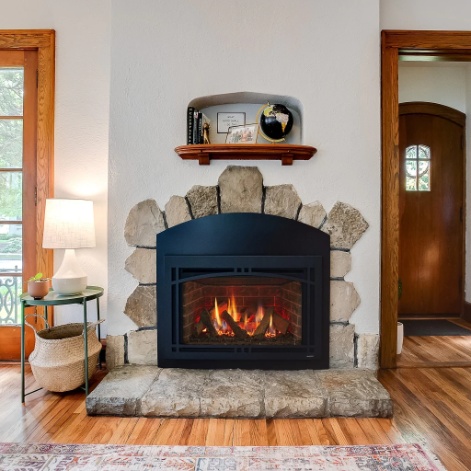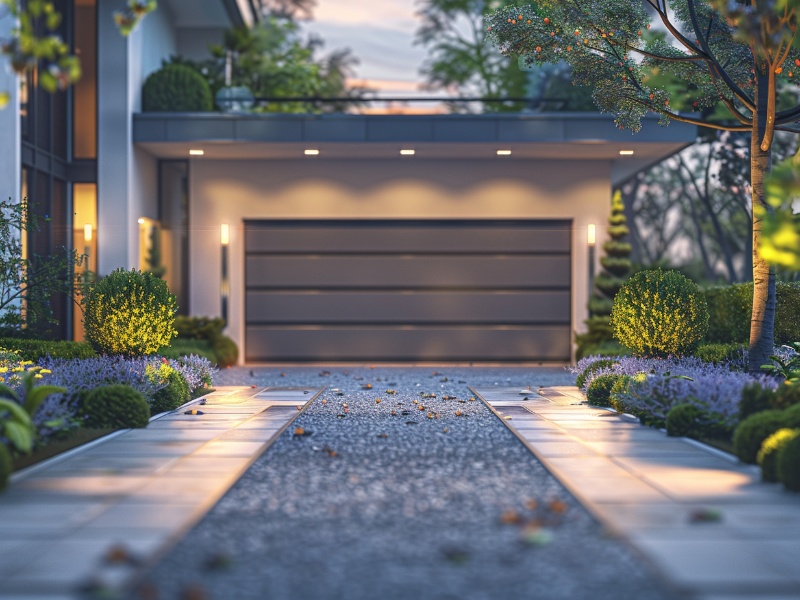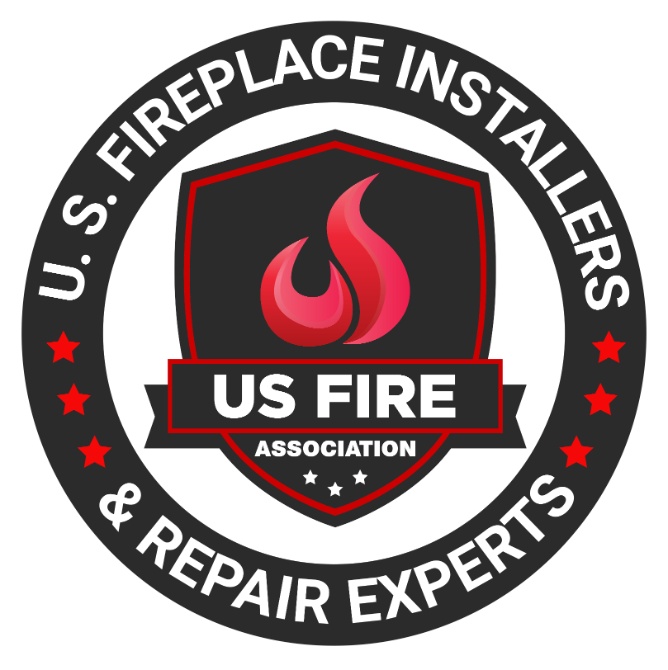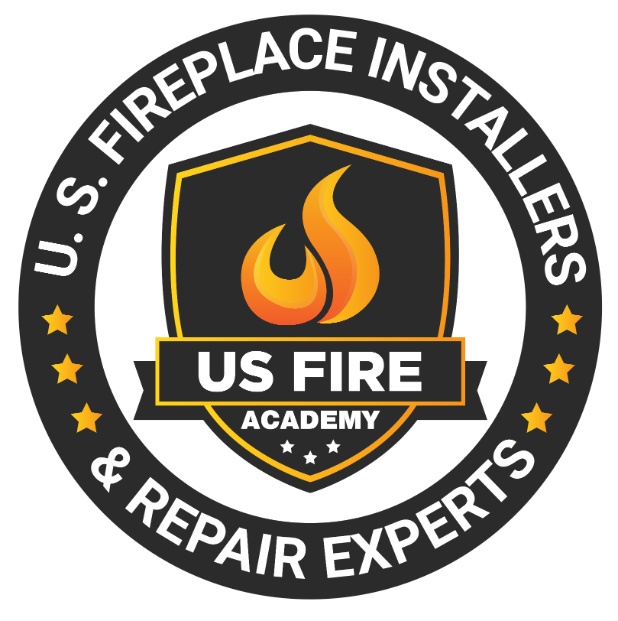Table of Contents
Choosing the right fireplace hearth material is crucial for both safety and style considerations. The hearth, the area surrounding the fireplace, not only plays a significant role in protecting your home from potential fire hazards but also adds to the overall aesthetic appeal of the space.
When it comes to safety considerations, it is important to choose a fireplace hearth material that is heat-resistant and durable. The material should be able to withstand high temperatures without cracking or warping, ensuring the safety of your home and loved ones. A non-combustible material is essential to prevent the risk of fire spreading.
On the other hand, style and aesthetic considerations allow you to customize the look of your fireplace hearth to complement your interior design. By selecting the right material, you can create a focal point in the room and enhance the overall ambiance. Different materials offer various colors, textures, and patterns, allowing you to achieve the desired style and visual impact.
There are several types of fireplace hearth materials to choose from, each with its own unique features and benefits. These include natural stone, ceramic tile, concrete, brick, metal, and glass. Each material has different characteristics that need to be carefully considered to ensure it meets your safety requirements and aligns with your desired style.
Comparing fireplace hearth materials involves evaluating factors such as durability, heat resistance, maintenance requirements, and cost. Some materials may require more upkeep, while others offer better longevity. It is important to weigh these factors against your specific needs and preferences to make an informed decision.
Factors that should be taken into account when choosing a fireplace hearth material include safety requirements, style and design preferences, and budget. By considering these factors and understanding the pros and cons of different materials, you can select the best fireplace hearth material that offers a balance between safety, style, and functionality.
Importance of Choosing the Right Fireplace Hearth Material
Choosing the right fireplace hearth material is crucial for both safety and style. In this section, we’ll explore why this decision is so important. We’ll dive into the safety considerations that should be taken into account when selecting a fireplace hearth material, as well as the various style and aesthetic factors to consider. With a focus on ensuring both the safety and visual appeal of your fireplace, we’ll provide you with the information you need to make an informed decision.
Safety Considerations for Fireplace Hearths
When it comes to fireplace hearths, Maintenancesafety considerations should be a top priority. Here are some important safety considerations to keep in mind:
- Fire-resistant materials: Choose a fireplace hearth material that is fire-resistant. Materials like natural stone, ceramic tile, and concrete have high heat resistance and can help prevent accidents.
- Proper insulation: Ensure that the hearth is properly insulated to prevent heat transfer to nearby combustible materials. This can help reduce the risk of accidental fires.
- Clearance requirements: Familiarize yourself with the clearance requirements for your specific fireplace model. The hearth should be installed at a safe distance from walls, furniture, and other flammable objects.
- Suitable dimensions: The hearth should be wide and deep enough to catch any sparks or embers that may escape from the fireplace. This helps prevent them from reaching flammable surfaces.
- Childproofing: If you have young children or pets, consider installing safety gates or screens to prevent them from coming into contact with the fireplace hearth. This can help avoid burns and other accidents.
Remember, safety considerations for fireplace hearths are key. By considering these safety precautions, you can enjoy the warmth and ambiance of your fireplace without compromising the well-being of your loved ones.
My neighbor recently experienced a scary incident with their fireplace hearth. They had installed a hearth made of wood, unaware of the safety risks. One evening, a spark jumped out of the fireplace and landed on the wooden hearth, instantly igniting it. Thankfully, they were able to quickly extinguish the fire, but it served as a wake-up call. They immediately replaced the wooden hearth with a fire-resistant ceramic tile hearth, prioritizing safety considerations above all else.
Style and Aesthetic Considerations for Fireplace Hearths
When considering the style and aesthetic aspects of fireplace hearths, there are several factors to take into account:
- Style and Material: The material used for the hearth can greatly impact the overall look and feel of the fireplace. Natural stone, such as marble or granite, can create a luxurious and timeless appearance. Ceramic tile offers a wide range of design options, from traditional to modern. Concrete provides a sleek and contemporary look. Brick adds a rustic charm, while metal and glass offer a more avant-garde and unique aesthetic.
- Color: The color of the hearth should complement the surrounding décor and create visual harmony. Earth tones and neutral colors can blend seamlessly with any style, while bold and vibrant hues can make a statement and add personality to the space.
- Texture: Consider the texture of the hearth material and how it contributes to the overall aesthetic. A smooth and polished surface can create a sophisticated and elegant look, while a rough or textured finish can add character and visual interest.
- Pattern: Some materials, such as ceramic tile or brick, allow for various patterns and designs. Chevron, herringbone, or mosaic patterns can add a touch of complexity and visual appeal to the hearth.
- Size and Shape: The size and shape of the hearth should align with the dimensions of the fireplace and the surrounding area. A larger hearth may create a more grand and imposing presence, while a smaller hearth can offer a cozy and intimate feel.
- Compatibility with Style: It’s important to choose a hearth material that complements the overall style and design of the room. Consider the existing elements, such as flooring, walls, and furniture, to ensure a cohesive and harmonious aesthetic.
Types of Fireplace Hearth Materials
When it comes to fireplace hearths, the material you choose can make a striking difference in both safety and style. In this section, we’ll explore an array of options, from the timeless beauty of natural stone to the sleek elegance of glass. Each subsection will dive into the characteristics and benefits of a specific fireplace hearth material, so you can find the perfect match for your home. Get ready to discover the possibilities and elevate your fireplace to new heights of charm and functionality.
Natural Stone
When it comes to fireplace hearths, natural stone is a top choice for many homeowners. Its durability, heat resistance, and timeless beauty make it highly desirable.
| Benefits | Examples |
| 1. Durability | Natural stone hearths, such as granite, marble, and slate, are extremely durable and can withstand high temperatures without cracking or warping. |
| 2. Heat Resistance | Natural stone has excellent heat resistance, making it a safe option for fireplace hearths. It can withstand the intense heat without being damaged. |
| 3. Aesthetic Appeal | Natural stone provides a timeless and elegant look to any fireplace. The unique patterns and colors of stones like marble and limestone add a touch of luxury. |
| 4. Low Maintenance | Natural stone hearths are relatively easy to maintain. Regular cleaning with a mild detergent and periodic sealing will keep them looking beautiful for years. |
| 5. Versatility | There are various types of natural stones available, each with its own distinct characteristics. Homeowners can choose from a range of options to match their style and design preferences. |
When considering a natural stone hearth, it is essential to choose a reputable supplier or contractor who can provide high-quality materials and professional installation. Factor in the budget, as natural stone hearths can vary in cost depending on the type and quality of the stone.
Ceramic Tile
When considering ceramic tiles as fireplace hearth materials, you’ll find them to be an excellent option. Ceramic tiles offer a combination of durability, style, and ease of maintenance that makes them a popular choice for this purpose.
| Durability | Ceramic tiles are renowned for their strength and ability to withstand high temperatures. They are resistant to cracking or breaking, making them a long-lasting choice for a fireplace hearth. |
| Heat Resistance | Ceramic tiles possess excellent heat resistance properties, making them safe to use near a fire. They can handle the intense heat without warping or discoloration, ensuring the hearth looks great and remains intact. |
| Maintenance | Ceramic tiles are easy to clean and maintain. They are resistant to stains and water damage, making them suitable for use in a fireplace. Regular sweeping and occasional mopping are usually enough to keep them looking pristine. |
| Cost | Ceramic tiles provide an affordable option compared to other hearth materials such as natural stone or glass. They offer great value for their durability and aesthetic appeal. |
When choosing ceramic tiles for your fireplace hearth, it’s important to consider safety requirements and style preferences. Ensure that the tiles meet safety standards and are suitable for use near a fire. Select a design or color that complements your overall interior and enhances the visual appeal of your fireplace. Additionally, take your budget into account and choose ceramic tiles that offer the best combination of quality and affordability.
Concrete
Concrete is a popular material for fireplace hearths due to its durability and versatility. It can withstand high temperatures without cracking or warping, making it a safe choice for a fireplace surround. Concrete can be molded into various shapes and sizes, allowing for customization to fit any style or design preference.
Aesthetic: The natural gray color of concrete can complement both modern and traditional fireplace designs. It can also be stained or painted to match the existing decor of the room. Whether you prefer a sleek, minimalist look or a more rustic, textured finish, concrete can be tailored to your desired aesthetic.
Durability: Concrete is a strong and long-lasting material that can withstand the heat and wear of regular fireplace use. It is resistant to cracking, chipping, and fading, ensuring that your hearth will maintain its beauty for years to come.
Maintenance: Concrete hearths are relatively easy to clean and maintain. Regular sweeping and occasional wiping with a damp cloth should suffice to keep it looking its best. Sealing the concrete can also help protect it from stains and spills.
Cost: Concrete hearths are typically more affordable compared to natural stone or metal options. The cost of a concrete hearth will depend on factors such as size, design complexity, and any additional finishes or treatments.
Considering these factors, concrete is a practical and stylish choice for a fireplace hearth. Its durability, customization options, and relatively low maintenance make it an excellent option for homeowners seeking both safety and style.
Brick
is a popular material for fireplace hearths due to its durability, heat resistance, and classic appearance. It is a versatile option that can complement various styles and design preferences.
| Durability | Brick is known for its strength and durability, making it a long-lasting option for fireplace hearths. |
| Heat Resistance | Brick is highly resistant to heat, making it safe to use in front of a fireplace and withstand high temperatures without damage. |
| Maintenance | Brick hearths are relatively low maintenance. They can be easily cleaned with a brush or vacuum to remove any dirt or debris. |
| Cost | The cost of a brick hearth can vary depending on the type of bricks used and the complexity of the design. It is generally considered an affordable option compared to other materials. |
When choosing a fireplace hearth material, factors to consider include safety requirements, style and design preferences, and budget. Brick meets safety requirements due to its fire-resistant properties and can be adapted to various aesthetics. It offers a classic and timeless look that can enhance the overall ambiance of a room. Brick hearths are often more cost-effective compared to other materials such as natural stone or metal. Whether you prefer a traditional or modern style, a brick hearth can be a versatile and practical choice for both safety and style considerations.
Metal
Metal is a popular material for fireplace hearths due to its durability, heat resistance, and modern aesthetic. It is commonly used in both traditional and contemporary fireplace designs. When considering metal as a fireplace hearth material, there are several factors to keep in mind.
Material: Metal hearths are typically made from steel, iron, or copper. Each metal option has its own unique properties and appearance, allowing homeowners to choose the one that best complements their style.
Heat Resistance: Metal hearths are known for their excellent heat resistance, making them a safe choice for use in front of fireplaces. They can withstand high temperatures without warping or discoloration.
Durability: Metal hearths are highly durable and resistant to scratches and dents, ensuring they will withstand daily use for years to come.
Maintenance: Metal hearths are relatively low maintenance. They can be easily cleaned with a damp cloth and mild detergent.
Aesthetic: Metal hearths add a sleek and contemporary touch to any fireplace. They can be customized with various finishes, such as polished or brushed, to match the overall design scheme of the room.
Cost: The cost of a metal hearth will vary depending on the chosen metal type and finish. Compared to other materials such as natural stone, metal hearths tend to be more affordable.
Metal is a durable, heat-resistant, and visually appealing option for a fireplace hearth. Whether you prefer a modern or traditional aesthetic, a metal hearth can be a stylish and practical addition to your home.
Metal has been used as a fireplace hearth material for centuries. Its heat resistance and durability made it a popular choice among early fireplace builders. Over time, the use of metal for hearths has evolved, with various metals and finishes being introduced to cater to different design preferences. Today, metal hearths continue to be a sought-after option for homeowners looking to create a visually striking and safe fireplace environment.
Glass
In the context of choosing the right fireplace hearth material, one option to consider is glass. Glass fireplace hearths offer a sleek and modern look to any space.
Here is a table comparing glass as a fireplace hearth material:
| Aspect | Value |
| Durability | Glass hearths are generally durable and resistant to cracking or chipping. |
| Heat Resistance | Glass can handle high temperatures without warping or discoloring, making it a safe option for a fireplace hearth. |
| Maintenance | Glass hearths are easy to clean and require minimal maintenance. Regular wiping with a glass cleaner is sufficient to keep them looking great. |
| Cost | Glass hearths can range in price, depending on the thickness and type of glass used. They tend to be more expensive than other materials like ceramic tile or concrete. |
Glass is a stylish and functional choice for a fireplace hearth. Its durability, heat resistance, and easy maintenance make it an attractive option for those seeking modern aesthetics in their homes. Although it may be pricier compared to other materials, the sleek and elegant look that glass provides can be well worth the investment.
In a similar tone, let me share a true story. My friend recently renovated her living room and decided to install a glass fireplace hearth. The result was stunning! The glass hearth added a touch of sophistication to the space and became an instant conversation starter. Not only did it enhance the overall design, but it also provided a safe and functional foundation for the fireplace. She is thrilled with her decision to choose glass as her fireplace hearth material and highly recommends it to anyone looking to create a modern and stylish ambiance in their home.
Comparing Fireplace Hearth Materials
Comparing fireplace hearth materials is crucial when it comes to ensuring both safety and style. In this section, we’ll dive into the various aspects that distinguish different hearth materials. From durability and heat resistance to maintenance and cost, we’ll explore how these factors play a role in choosing the best option for your fireplace. So, let’s uncover the facts and make an informed decision for a hearth that combines safety and style seamlessly.
Durability
is a crucial factor to consider when choosing a fireplace hearth material. It determines the longevity and resilience of the hearth, ensuring that it can withstand the harsh conditions of a fireplace over time.
- Natural Stone: Natural stone hearths, such as granite or slate, are highly durable. They can resist heat and do not crack easily, making them a long-lasting option for fireplace hearths.
- Ceramic Tile: Ceramic tile hearths are known for their durability. They are resistant to heat and do not easily chip or crack. With proper maintenance, ceramic tile hearths can last for many years.
- Concrete: Concrete hearths are incredibly durable and can withstand high heat without warping or cracking. They are also resistant to moisture, making them a suitable choice for outdoor fireplaces.
- Brick: Brick hearths are renowned for their durability. They are able to withstand high temperatures and are resistant to cracking or chipping. Brick hearths can last for decades with proper care.
- Metal: Metal hearths, such as stainless steel or iron, offer excellent durability. They are highly heat-resistant and can handle extreme temperatures without getting damaged. Metal hearths are also easy to maintain.
- Glass: Glass hearths, although not as durable as other materials, can still offer good longevity if made from tempered or heat-resistant glass. They provide a modern, sleek look to the fireplace.
When selecting a fireplace hearth material, it is important to consider the level of durability required based on the frequency of fireplace use and personal preferences. Proper maintenance and adherence to safety guidelines can also contribute to the longevity of the hearth material.
Durability is a key consideration when choosing a fireplace hearth material. Opting for a durable option like natural stone, ceramic tile, concrete, brick, metal, or tempered glass can ensure that your hearth withstands the test of time.
Heat Resistance
Fireplace hearth materials need to have high heat resistance to withstand the intense temperatures generated by the fire. Natural stone, such as granite or slate, is renowned for its exceptional heat resistance properties, making it a popular choice for fireplace hearths. Ceramic tile is another material that boasts high heat resistance and can endure the heat of the fire without cracking or warping. Concrete is a durable material with good heat resistance, which makes it suitable for fireplace hearths. Brick is a traditional material used for fireplace hearths, known for its ability to absorb and radiate heat without being damaged. Metal, such as steel or iron, is highly heat resistant and can be used as a hearth material, particularly for modern or industrial-style fireplaces. While glass can be used for fireplace hearths, it is crucial to select a high-temperature glass that can withstand the heat without cracking or shattering.
True story: I once had a fireplace with a hearth made of ceramic tiles. One winter evening, a roaring fire was blazing, and my family and I were relishing its warmth. Suddenly, a log shifted, and a hot ember fell onto the hearth. We felt relieved to witness that the ceramic tile held up well, with no signs of cracking or damage. This incident emphasized the significance of selecting a heat-resistant material for the fireplace hearth, ensuring not only safety but also peace of mind during cozy winter nights by the fire.
Maintenance
Maintenance is an important factor to consider when choosing a fireplace hearth material. Proper maintenance can ensure the longevity and functionality of the hearth. Here are some key steps to follow:
- Clean regularly: Regular cleaning is essential to keep the hearth looking good and free from debris. Use a brush or vacuum to remove any dust, ash, or other particles.
- Seal the material: Some hearth materials, like natural stone or concrete, may require sealing to protect them from stains, moisture, and damage. Follow the manufacturer’s instructions for sealing the specific material.
- Inspect for damage: Periodically inspect the hearth for any chips, cracks, or other damage. Address any issues immediately to prevent further damage and ensure safety.
- Repair as needed: If there are any damages or signs of wear, repair them promptly. This may involve patching or replacing damaged sections of the hearth material.
- Protect from heat: Take precautions to protect the hearth material from excessive heat. Use a fireplace screen or grate to prevent sparks or embers from directly landing on the hearth.
- Avoid harsh cleaners: Use gentle cleaning products that are specifically designed for the hearth material. Harsh chemicals can damage or discolor the surface.
- Follow manufacturer’s instructions: Always refer to the manufacturer’s guidelines for maintenance and care to ensure the best results and avoid voiding any warranties.
By following these maintenance steps, you can keep your fireplace hearth material in optimal condition and enjoy its safety and style for years to come.
Cost
The cost is an important factor to consider when choosing a fireplace hearth material. Different materials come with varying price points, and it’s essential to consider your budget while making a selection. Here is a breakdown of the cost of different fireplace hearth materials:
| Material | Cost Range |
| Natural Stone | $40 – $200 per square foot |
| Ceramic Tile | $5 – $15 per square foot |
| Concrete | $20 – $100 per square foot |
| Brick | $5 – $10 per square foot |
| Metal | $50 – $150 per linear foot |
| Glass | $100 – $300 per square foot |
It’s important to note that these cost ranges can vary depending on factors such as the quality of materials, installation complexity, and region. Additional costs may include labor, sealants, adhesives, and any customization or special finishing requirements.
Pro-tip: When considering the cost, also take into account the long-term value and durability of the fireplace hearth material. While some materials may have a higher upfront cost, they may require less maintenance and offer better longevity, resulting in cost savings over time.
Factors to Consider When Choosing a Fireplace Hearth Material
When it comes to choosing a fireplace hearth material, there are several factors to consider that can greatly impact both the safety and style of your space. In this section, we’ll explore these crucial factors that will guide you in making the right choice. From understanding safety requirements to aligning with your style and design preferences, and even factoring in your budget, we’ll cover it all. So, let’s dive in and discover how to select the perfect fireplace hearth material for your needs!
Safety Requirements
When it comes to choosing a fireplace hearth material, safety requirements are of utmost importance. Safety is always the top priority when deciding on a fireplace hearth material. There are several key factors to consider:
- Fire resistance: The chosen material should have excellent fire resistance and be able to withstand high temperatures without cracking or warping. Natural stone, ceramic tile, or concrete are all great options that offer exceptional heat resistance.
- Non-flammable: It is crucial to select a non-combustible material to eliminate the risk of fire. Opt for materials like brick, metal, or glass, as they do not catch fire easily.
- Insulation: The hearth material should provide proper insulation to protect the surrounding surfaces from heat damage. Natural stone and ceramic tile are well-known for their insulating properties and are ideal choices.
- Slip resistance: Safety concerns go beyond fire hazards and extend to accident prevention. Choose a material that offers good slip resistance, especially in areas prone to water or moisture. This will help reduce the risk of falls and potential injuries.
- Low maintenance: To ensure ongoing safety, opt for a fireplace hearth material that requires minimal maintenance. Avoid materials that are prone to cracking, chipping, or staining, as these can weaken over time and compromise safety.
By carefully considering these safety requirements, you can confidently select a fireplace hearth material that not only enhances the aesthetic appeal of your fireplace but also prioritizes the wellbeing of your home and loved ones.
Style and Design Preferences
When it comes to choosing a fireplace hearth material, style and design preferences play a significant role. The material you select will not only impact the overall aesthetic of your fireplace but also complement the style and design of your home. Below is a table that compares different fireplace hearth materials based on their style and design characteristics:
| Natural Stone | Elegant and timeless, offers various textures and colors |
| Ceramic Tile | Versatile, comes in a wide range of styles and patterns |
| Concrete | Modern and contemporary, can be customized with different finishes |
| Brick | Rustic and traditional, adds charm and character to the fireplace |
| Metal | Sleek and industrial, perfect for a modern or minimalist look |
| Glass | Contemporary and luxurious, creates a stunning visual impact |
When deciding on the style and design of your fireplace hearth, consider the overall theme of your home and the mood you want to create. If you prefer a classic and elegant look, natural stone or brick would be suitable options. For a more modern and sleek appearance, metal or glass can be the perfect choices. Ceramic tile and concrete offer versatility and can be adapted to various design styles.
Ultimately, the style and design preferences will guide your decision when selecting a fireplace hearth material that enhances the aesthetic appeal of your home.
Budget
When considering the budget for choosing a fireplace hearth material, there are several factors to keep in mind:
- Cost: Different materials come at varying price points. Natural stone, such as marble or granite, tends to be more expensive, while concrete and ceramic tile are generally more affordable options.
- Installation: The cost of installation can vary depending on the complexity of the design and the labor involved. Some materials may require specialized skills or additional equipment, which can affect the overall cost.
- Longevity: Consider the lifespan of the material and how often it may need to be replaced or repaired. While certain materials may have a higher upfront cost, they may also offer greater durability and require less maintenance over time, resulting in long-term savings.
- Maintenance: Some materials may require regular sealing, cleaning, or special care, which can add to the overall cost of ownership. It’s important to factor in ongoing maintenance expenses when considering the budget.
- Customization: If you have specific design preferences or require custom dimensions for your fireplace hearth, it’s important to consider any additional costs that may be associated with customization.
Ultimately, it’s essential to balance your budgetary constraints with the desired style, safety considerations, and longevity of the fireplace hearth material to make the best choice for your home.
Frequently Asked Questions
1. What are the top three materials for fireplace hearths?
The top three materials for fireplace hearths are granite, concrete, and marble. These materials are durable, heat-resistant, and add an elegant touch to any home.
2. Are there any building codes or regulations to consider when constructing a hearth?
Yes, it is important to check building codes and regulations before constructing a hearth. Building codes may dictate the size, thickness, and materials allowed for hearths in your area. It’s important to comply with these regulations for safety and legal reasons.
3. Can quarry tiles be used as a material for fireplace hearths?
Yes, quarry tiles can be used as a material for fireplace hearths. They are non-combustible and provide a traditional look to the hearth. Quarry tiles are known for their ability to heat evenly and are a popular choice among homeowners.
4. Are wood-burning stoves compatible with limestone hearths?
No, limestone is not a suitable material for wood-burning stoves. Limestone is more commonly used for gas and electric fireplaces. It is important to choose a heat-resistant material like granite or concrete for wood-burning stoves to ensure safety.
5. Why is it important to have a hearth for solid fuel burning fireplaces?
A hearth is required for solid fuel burning fireplaces for safety reasons. It acts as a fire-resistant surface that protects the combustible floor from heat and burning embers. The hearth serves as a safety feature to prevent accidents and keep your home safe.
6. Can a hearth extension be painted?
Whether a hearth extension can be painted depends on the material. Concrete and brick hearth extensions are more suitable for painting. However, it is important to consider the material’s porosity and whether paint will adhere properly. It’s recommended to consult with local experts or masonry services for the best approach.
Latest Articles

What Is An NG (Natural Gas) Indicator And Why You Need It For Your Fireplace
Table of Contents1 Understanding Natural Gas Fireplaces2 What is an NG Indicator?3 Importance of NG Indicators for Safety4 Types of NG Indicators5 Installation and Maintenance of NG Indicators6 Signs of a Faulty NG Indicator7 Frequently Asked Questions Natural gas fireplaces are a favored option among numerous homeowners due to their convenience and effectiveness. But, what is an NG (Natural Gas) indicator and why you need it for your fireplace? It is imperative to comprehend how they function and the significance of having an NG (Natural Gas) indicator for safety purposes. This article delves into the definition and significance of NG indicators. We will discuss the potential hazards associated with the absence of one and the various types of indicators accessible. Also, we will discuss installation and maintenance recommendations, and methods to recognize and rectify issues with malfunctioning indicators. Stay well-informed and ensure the safety of your home by referring to this exhaustive guide. Understanding Natural Gas Fireplaces Natural gas fireplaces serve as an efficient and convenient heating option for numerous households. They utilize natural gas as a fuel source to deliver consistent warmth and ambiance. How They Work and Why They Need NG Indicators The operation of natural gas fireplaces involves igniting natural gas to generate heat. This process requires diligent monitoring to ensure both safety and efficiency, a task facilitated by the use of NG indicators. NG indicators play a critical role in detecting potential gas leaks. They enable residents to promptly address and mitigate any associated hazards. Through continuous monitoring of gas levels and providing timely warnings and alerts, NG indicators uphold a secure indoor environment. It is imperative to ensure that these indicators function properly to facilitate the effective operation of natural gas fireplaces. This helps mitigate the inherent risks linked to gas leaks. What is an NG Indicator? An NG indicator is a specialized device equipped with advanced sensors and technology. It is specifically designed to detect natural gas leaks and monitor gas pressure in appliances, such as fireplaces. Definition and Purpose The NG indicator functions as a detector that monitors gas appliances for potential leaks. It provides essential functionality to ensure safety in households utilizing natural gas. These detectors play a crucial role in protecting residences by notifying occupants of dangerous gas leaks long before they escalate into perilous situations. Through continuous monitoring of gas levels in the vicinity, NG indicators offer an additional layer of protection. This is particularly important in properties that rely on gas-operated fireplaces or stoves. These devices not only help avert potential disasters but also enhance the overall peace of mind of homeowners. They assure them that their living spaces are equipped with reliable safety features. Importance of NG Indicators for Safety Natural gas indicators are essential for maintaining safety in households equipped with natural gas appliances. These devices serve as a proactive measure to promptly detect gas leaks. This offers homeowners a sense of security and assurance. Potential Dangers of Not Having an NG Indicator The absence of an NG indicator in residences equipped with natural gas appliances can pose significant hazards. This includes the risk of undetected gas leaks , carbon monoxide poisoning , and pilot outages that may lead to dangerous situations. These potential risks can profoundly impact indoor air quality. They directly influence the health and safety of individuals residing in the household. Undetected gas leaks can go unnoticed, gradually permeating the air and creating a potentially explosive environment. Insufficient ventilation from undetected exposure to carbon monoxide can lead to serious health complications. These range from mild symptoms such as dizziness to fatal poisoning. Without proper monitoring from an NG indicator, families are left susceptible to these concealed threats. This underscores the critical importance of implementing proactive measures to mitigate such risks. Types of NG Indicators Indicators for Natural Gas (NG) are available in diverse types. Each presents distinct detection capabilities tailored to specific requirements, encompassing both manual and automated alternatives. Manual vs. Automatic Indicators Manual NG indicators require user intervention for monitoring gas levels and identifying leaks. On the other hand, automatic indicators employ sophisticated technology to deliver continuous, real-time monitoring. This heightened efficiency and oversight enhance safety protocols. Conventional manual indicators rely on individuals to physically inspect and evaluate gas levels periodically. This renders them more susceptible to human errors. Conversely, automatic indicators feature sensors capable of promptly detecting even the most minute fluctuations in gas levels. This establishes a more dependable and precise monitoring mechanism. Automatic indicators can activate alerts and shut-off systems upon detecting a leak. This ensures immediate action to avert potential hazards. This advanced technology enhances safety protocols and instills a sense of command and assurance among users. Installation and Maintenance of NG Indicators The reliable and accurate performance of NG indicators necessitates proper installation and consistent maintenance. This often entails professional installation and adherence to recommended service guidelines. Proper Installation and Regular Maintenance Tips The proper installation of NG indicators involves adhering to the specifications in the user manual. Maintenance protocols entail strict adherence to a predetermined maintenance schedule to ensure sustained operational efficiency. During the installation phase, it is imperative to verify that the NG indicators are securely affixed in the designated location as stipulated by the manufacturer. Crucial steps include confirming power source compatibility and ensuring proper grounding of the device to optimize performance. Calibration of the indicator must be executed meticulously to ensure precise readings. Regarding maintenance, essential practices include regular inspection for signs of wear, thorough cleaning of the indicator components, and routine functionality tests. By allocating time to a consistent maintenance regimen, the NG indicator can operate with optimal efficiency over an extended duration. Signs of a Faulty NG Indicator Recognizing indicators of a malfunctioning NG indicator is essential for upholding safety and performance standards. Inaccuracies and detection issues can undermine the efficacy of these devices. Identifying and Addressing Issues The process of identifying and addressing issues related to NG (natural gas) indicators requires a systematic troubleshooting approach. This ensures their optimal performance

What You Need To Know About Gas Log Set Safety And Installation Considerations
Table of Contents1 Understanding Gas Log Sets2 Safety Considerations for Gas Log Sets3 Installation Guidelines for Gas Log Sets4 Maintaining and Troubleshooting Gas Log Sets5 Frequently Asked Questions Gas log sets are a favored option among homeowners seeking to enjoy the comfort and atmosphere of a conventional fireplace without the inconvenience of wood. This article tells you what you need to know about gas log set safety and installation considerations. Before incorporating one into your residence, it is imperative to understand the safety considerations associated with their use. This discussion delves into the potential hazards linked with gas log sets. It presents crucial precautions to uphold the safety of your home. Also, it outlines proper installation procedures and offers insight into common errors to avoid. Finally, it provides advice on maintenance and troubleshooting. Gain comprehensive knowledge on gas log set safety and installation considerations. Understanding Gas Log Sets Comprehending gas log sets is essential for individuals seeking to elevate their fireplace experience, and for gas lag set safety and installation. These heating appliances can operate on either natural gas or propane. In addition, they are available in a range of styles, including vented, ventless, and vent-free options. They provide an array of benefits and customization opportunities through various fireplace accessories. What are Gas Log Sets? Gas log sets are meticulously crafted artificial logs. They are designed to imitate the appearance and functionality of authentic wood logs within fireplaces. These gas log sets typically consist of ceramic or refractory concrete logs that have been skillfully molded and painted. This allows them to replicate the natural grain and texture of real wood. The logs are arranged in various configurations within the fireplace. They establish a realistic and welcoming ambiance. In addition to the logs, gas log sets often include fireplace accessories such as glowing embers. Accessories also include decorative stones, and even pine cones to enhance the overall aesthetic appeal. Homeowners can select from an array of placement options. These include traditional wood stack, cascading driftwood, or a contemporary geometric arrangement. Homeowners can align their preferred style and design preferences. Safety Considerations for Gas Log Sets Safety considerations for gas log sets are of utmost importance to guarantee a secure and pleasant fireplace experience. It is essential to address potential hazards such as carbon monoxide exposure, gas leaks, and fire safety to maintain a safe environment for homeowners. Potential Hazards and Precautions Gas log sets come with potential hazards that must be taken seriously, including the risks of gas leaks, carbon monoxide poisoning, and fire incidents. It is imperative to establish and adhere to rigorous safety measures to ensure the well-being of individuals and properties involved in the use of gas log sets. Gas leaks represent a significant hazard when utilizing gas log sets. They can result in the accumulation of combustible gas within the premises, heightening the possibility of explosions or fires. Carbon monoxide, an insidious gas generated during incomplete combustion, poses a grave threat due to its colorless and odorless nature, making it undetectable without proper monitoring. To address these risks effectively, it is vital to install carbon monoxide detectors and gas leak sensors in the vicinity of the gas logs. Routine maintenance checks on the gas log system, including cleaning and inspection procedures, are critical to ensure safe operations and the prompt identification of potential issues. In case of a gas leak or suspected presence of carbon monoxide, immediate evacuation of the affected area is paramount, followed by prompt contact with emergency services. Recognizing the distinct odor of rotten eggs associated with natural gas can serve as an early warning sign, prompting swift actions to avert any potential accidents. Installation Guidelines for Gas Log Sets The installation of a gas log set necessitates meticulous planning and strict adherence to specific guidelines. This includes verifying a secure gas connection, ensuring proper gas lines are in place, and complying with local building codes. Often, the complexity of these requirements may require the expertise of a certified technician. Proper Installation Techniques The appropriate installation procedures for gas log sets involve the secure connection of gas lines, meticulous adherence to installation manuals, and strict compliance with local building codes. It is imperative to prioritize the guarantee of secure gas connections to avert leaks and potential safety hazards. During the installation of gas log sets, utilizing suitable sealants and fittings is essential to establish a tightly sealed connection. The correct installation of gas lines is critical for both the safety and operational efficacy of the gas log set. Reference to the installation manual is highly advisable for detailed, step-by-step guidance to prevent inaccuracies and ensure the successful establishment of the gas log set. Consistently adhering to building codes and regulations upholds safety standards. Seeking guidance and confirmation from a certified technician before and after installation can offer invaluable support and assurance throughout the process. Common Installation Mistakes to Avoid It is imperative to avoid common installation errors to ensure the secure and effective operation of gas log sets. This includes verifying proper gas connections and compliance with building codes. Improper gas connections can result in leaks and potential hazards, underscoring the importance of verifying the tightness and correct alignment of all fittings. Failure to adhere to building codes can lead to structural complications, penalties for non-compliance, or even safety concerns. To prevent these oversights, it is advised to consult the manufacturer’s installation guidelines and strictly adhere to local regulations. Engaging a certified technician for the installation of gas log sets guarantees that the procedure is carried out accurately and securely. This provides assurance that the system is functioning as intended. Maintaining and Troubleshooting Gas Log Sets Regular maintenance and troubleshooting of gas log sets are imperative to uphold their optimal performance and safety. This includes thorough examination of the pilot light, pilot assembly, and other gas appliances to preserve heating efficiency and promptly resolve any arising issues. Tips for Maintenance and Repair Ensuring the proper maintenance of your gas log set necessitates conducting

Key Considerations For Using Compressed Liquid Propane In Fireplace Installation
Table of Contents1 What is Compressed Liquid Propane?2 Benefits of Using Compressed Liquid Propane in Fireplaces3 Safety Precautions for Installing Compressed Liquid Propane Fireplaces4 Installation Process for Compressed Liquid Propane Fireplaces5 Maintenance and Care for Compressed Liquid Propane Fireplaces6 Alternative Fuel Options for Fireplaces7 Frequently Asked Questions If you are contemplating the use of compressed liquid propane in your fireplace installation, this discussion will delve into the advantages of adopting this alternative fuel option. These benefits include enhanced efficiency, cost savings, and important safety precautions to consider. Furthermore, a detailed step-by-step guide on the installation process will be provided, along with recommendations for maintenance and care. A comparison of various fuel options for fireplaces will also be conducted to assist you in making an informed decision. We encourage you to stay engaged to gain insights into optimizing your fireplace’s capabilities with compressed liquid propane. What is Compressed Liquid Propane? Compressed Liquid Propane is a versatile energy source contained in a high-pressure propane tank. It finds extensive utility in both residential and commercial settings, prominently including fireplaces. Recognized for its convenience and efficiency, Compressed Liquid Propane emerges as a favored option for heating residential spaces and facilitating culinary pursuits across various environments. Additionally, it serves as a viable fuel substitute in vehicular contexts, portable cooktops, and outdoor grilling scenarios due to its propensity for clean combustion. The attribute of portability, coupled with ease of storage, positions Compressed Liquid Propane as an optimal energy source for individuals residing off the conventional grid. It is also great for engaging in outdoor activities such as camping and recreational vehicle (RV) travel. Moreover, the high energy density inherent to Compressed Liquid Propane renders it a dependable choice for sustaining generators during instances of power disruptions. Benefits of Using Compressed Liquid Propane in Fireplaces Utilizing Compressed Liquid Propane for fireplace installation presents several benefits. These include enhanced fuel efficiency, convenience, cost-effectiveness, and a favorable environmental footprint. These attributes render it a recommended option for heating solutions, applicable to both on-grid and off-grid settings. Efficiency and Cost Savings The utilization of Compressed Liquid Propane in fireplaces offers significant advantages, notably in terms of high fuel efficiency and cost-effectiveness. These attributes are underscored by the exceptional BTU rating and overall heating efficiency of Compressed Liquid Propane. The elevated fuel efficiency exhibited by Compressed Liquid Propane fireplaces necessitates less fuel to generate the same level of heat compared to traditional wood-burning fireplaces or electric heating systems. Consequently, homeowners can realize cost savings on their heating expenditures over an extended period. Moreover, the clean-burning characteristics of propane minimize maintenance costs linked to soot and ash cleanup. This further enhances the cost-effectiveness of employing propane fireplaces. Safety Precautions for Installing Compressed Liquid Propane Fireplaces Ensuring safety is of utmost importance during the installation of Compressed Liquid Propane fireplaces. This requires strict adherence to safety regulations, meticulous attention to proper ventilation requirements, careful control of ignition sources, and the incorporation of carbon monoxide and gas leak detection systems. Important Safety Measures Essential safety protocols for the installation of Compressed Liquid Propane fireplaces encompass adherence to fire safety regulations. Engaging in professional assessments and employing sophisticated gas leak and carbon monoxide detection mechanisms is crucial. Professional evaluations play a critical role in identifying any prospective hazards or irregularities within the fireplace infrastructure. These assessments are vital in ensuring the operational integrity of all components and compliance with safety protocols. Routine inspections serve to forestall potential fire incidents, gas discharges, or carbon monoxide emissions that could pose significant threats to both the property and individuals in the vicinity. The utilization of advanced gas leak and carbon monoxide detection systems serves as an additional safeguard by promptly notifying occupants of any elevated levels of these hazardous gases. Installation Process for Compressed Liquid Propane Fireplaces The installation procedure for Compressed Liquid Propane fireplaces encompasses several critical steps. These include: Adhering to installation guidelines Correctly positioning the propane tank Ensuring precise gas line installation Optimizing heat output Monitoring pressure regulation Establishing the pilot light Step-by-Step Guide The installation process of Compressed Liquid Propane fireplaces involves a systematic approach. This begins with the construction of the firebox, followed by the installation of the gas control valve, setup of the ignition system, design of the flue, and verification of a suitable combustion air supply. The construction of the firebox assumes critical importance as it serves as the foundation of the fireplace structure. It securely holds the combustible materials in place. Subsequently, the gas control valve plays a key role in managing the propane flow, guaranteeing safe and efficient operation. The installation of the ignition system facilitates convenient and reliable fire initiation. Designing the flue is a necessary step to direct exhaust gases outside, thus preventing their accumulation indoors. Moreover, ensuring a proper combustion air supply is essential to sustain optimal burning conditions and enhance fuel consumption efficiency. Each component contributes significantly to the functionality and safety of the fireplace installation process. This underscores the importance of meticulous attention to detail and adherence to established protocols. Maintenance and Care for Compressed Liquid Propane Fireplaces Consistent maintenance and attention to Compressed Liquid Propane fireplaces are imperative to guarantee their optimal functionality. This includes adherence to prescribed maintenance protocols, regular chimney upkeep, prevention of soot accumulation, and scheduling of routine propane deliveries and professional inspections. Tips for Keeping Your Fireplace in Good Condition For the maintenance of your Compressed Liquid Propane fireplace, it is essential to conduct regular checks on ignition sources. Monitor flame appearance, clean the gas burner and pilot assembly, and verify the correct operation of the safety shut-off valve. The inspection of ignition sources requires a detailed examination of the electronic igniter. This helps identify any signs of damage or corrosion and ensures proper sparking upon activation. Monitoring flame appearance involves observing a consistent blue flame with minimal flickering, which signifies efficient combustion. Cleaning the gas burner and pilot assembly can be performed using a soft brush or compressed air to eliminate any dirt or debris that may

